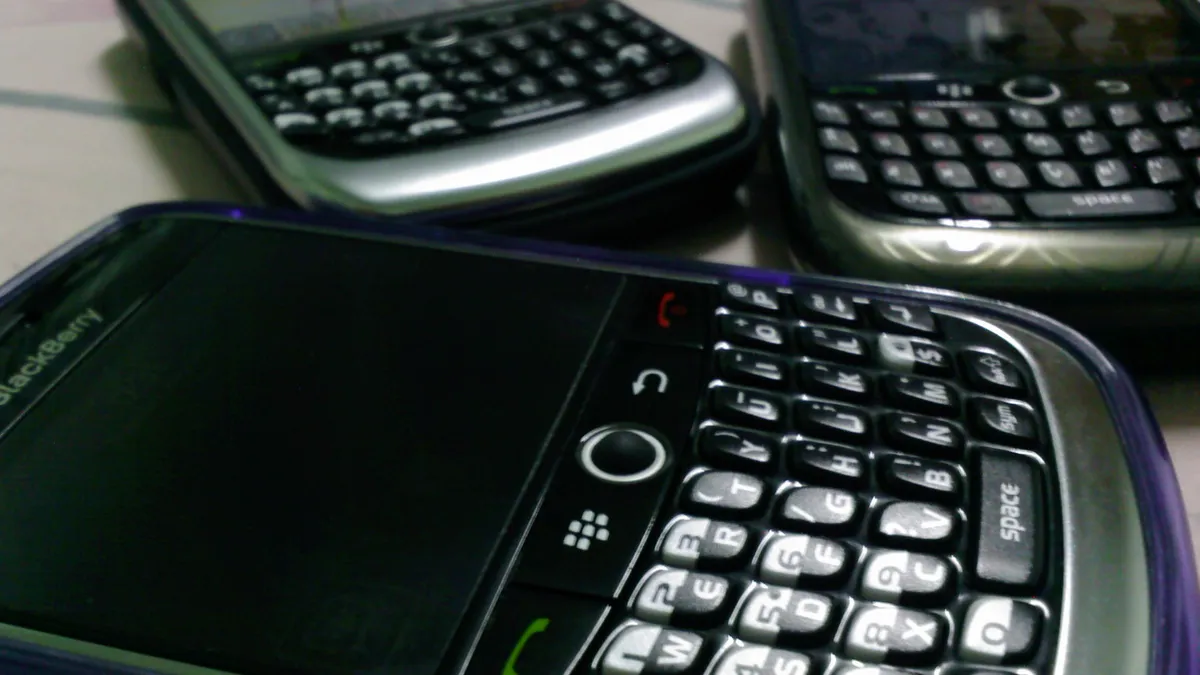Last month, BlackBerry confirmed it will no longer manufacture its iconic BlackBerry phones. The company made the announcement after reporting that second-quarter sales of BlackBerry devices dropped to 400,000. In contrast, Apple sold more than 44 million iPhones in the second quarter of 2016.
At one time, BlackBerry owned more than 50% of the global smartphone market. People were so hooked, many referred to them as "CrackBerrys."
So what happened? Why did the enterprise lose interest in BlackBerry and find new love with iPhones and Androids?
Looking back, there were several factors that hurt the mobile communications provider. At the height of the BlackBerry craze, companies often purchased BlackBerrys for employees to ensure they could stay connected while traveling or out of the office.
BlackBerry’s enterprise server approach provided corporate IT with a sense of security and control over mobile communication. Sales of the smartphones usually involved a business-to-business transaction, managed by a specialized BlackBerry sales team, and a corporate infrastructure purchasing manager.
For a time, this enterprise approach worked well.
But then the iPhone came along with a more advanced, user-friend design, which was more functional than a BlackBerry. Once the iPhone took off on the market, BlackBerry did not waver from its original model and was slow to modernize.
iPhones were also much more accessible to consumers, so it didn’t take long before executives were carrying two phones — an iPhone for personal use, and a BlackBerry for company use.
"But it was frustrating to carry two devices that were essentially doing the same thing," said Joseph Taylor, professor of Information Systems at California State University, Sacramento and the former director of IT strategic planning, innovation and governance for Wal-Mart Stores.
Pressure from employees and executives to use personal devices for work eventually gave rise to corporate bring your own device (BYOD) programs.
Once executives began buying their own consumer smartphones and using them for work through BYOD programs, the mobile device purchasing transaction became a business-to-consumer (B2C) purchase. In response, companies began to find alternative ways to manage mobile security that replaced previous reliance on the BlackBerry Server.
"BlackBerry’s competitive advantage had been around centralized security and corporate sales channel relationship management," said Taylor. "While those two factors are important in B2B transactions, they don’t mean much in B2C transactions, so the fall of BlackBerry was all but certain once BYOD took mobile purchasing decisions out of the company’s IT department and on to individual executives."
Heading for a fall
Eventually, BlackBerry’s smartphone worldwide market share fell to less than 1%.
BlackBerry’s fall from dominance really goes back to where they chose to prioritize, according to tech analyst Rob Enderle of the Enderle Group. While the company began with a focus on users, it gradually pivoted to focus increasingly on IT. That provided Apple — and eventually Google — the perfect opening. Conversely, Apple focused on the user and largely ignored IT.
As Enderle, points out, the same shift has happened repeatedly in the tech industry since the mid-1980s.
IBM focused initially on technology users because there was no IT at the time. But as IT grew, the company pivoted and lost track of the users, according to Enderle. The shift allowed Microsoft to take market leadership focused on the users.
"Windows 95 was arguably when Microsoft spanked the traditional market as a result. Netscape then hit Microsoft, effectively creating the internet and blindsiding Microsoft," Enderle said. "Netscape then pivoted to IT and took the initiative back. But Microsoft then focused IT and lost track of users, opening the door to challenges from both Apple and Google."
The recurring lesson?
"Focus on the people that use the tools you sell, not on the folks that simply buy them in bulk and supply those users," said Enderle. "IT still loves BlackBerry, but they lost the users. What both BlackBerry and Palm should have done was remind users why they loved the product, and the benefits of security and a physical keyboard, so both weren’t taken for granted."
Reinventing BlackBerry
The BlackBerry that formerly dominated the enterprise may be gone, but the company is still fighting for survival. CEO John Chen has worked to pivot the company’s focus toward development, apps and mobile security. Last month, Chen said he was two-thirds done in his effort to turn the company around. Part of that transformation effort includes several security-related deals with the federal government the company made earlier this year.
There is certainly promise in the security and solutions market. But in the enterprise, the issue of how to pay for such solutions is often a sticking point. As of yet, IT departments are generally not given extra resources for mobile device management (MDM).
The main question for Taylor is who is going to pay for BlackBerry’s offerings.
"For the business model to work somebody needs to be willing to pay more than a commodity mobile device for the additional security capabilities enabled by BlackBerry," Taylor said. "If they are selling to enterprise, how do they compete with other services that are already in the market?"
"There is absolutely growth ahead for the mobile computing market, however at this point, I’m not sure what competitive advantage BlackBerry has to go after that growth," Taylor said.
But Enderle says with the increasing number of breaches, the funding issue will eventually self-correct, and BlackBerry may once again find itself in the right place at the right time.
"BlackBerry has pivoted to where their market will eventually be, we are just waiting for operational management — the folks that own the budgets these days — to recognize the critical need to get a lot more serious about mobile device security," said Enderle. "There is no doubt in my mind, given the massive increase in cyberattacks, they will eventually get there."




















